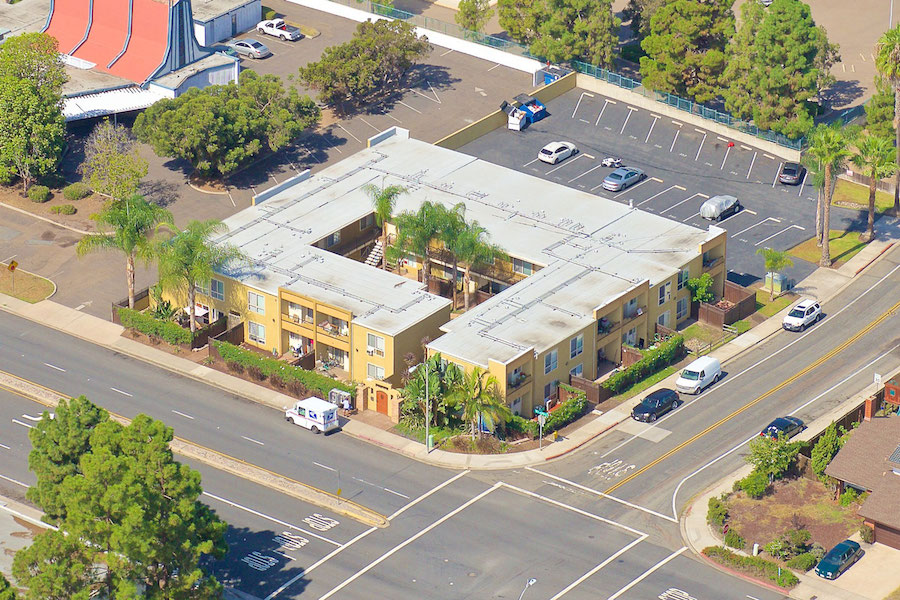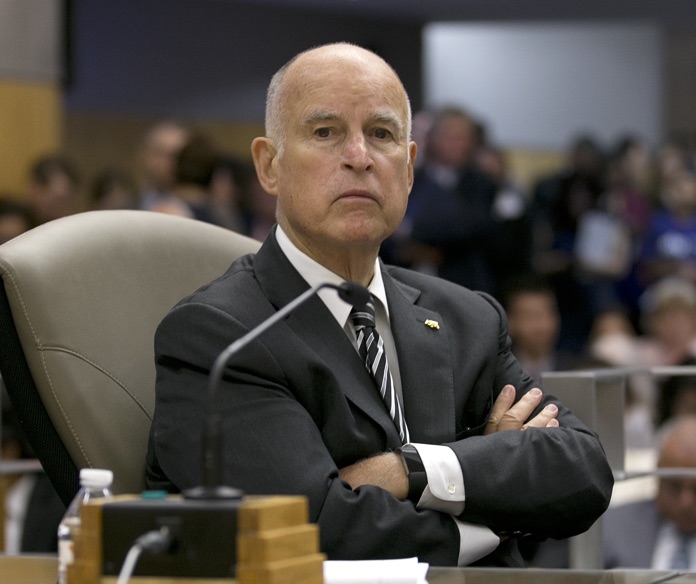Daily Business Report-Aug. 9, 2018
Mendocino fire. Carbon pollution from fires is harmful long after the blazes are out. (Image: CALmatters.org)
As California burns, climate goals may go up in smoke
— even after the flames are out
By Julie Cart | CALmatters
As crews across California battle more than a dozen wildfires—including the largest in state history—the blazes are spewing enough carbon into the air to undo some of the good done by the state’s climate policies.
What’s even worse: Climate-warming compounds that will be released by the charred forests long after the fires are extinguished may do more to warm up the planet than the immediate harm from smoky air.
Scientists say that only about 15 percent of a forest’s store of carbon is expelled during burns. The remainder is released slowly over the coming years and decades, as trees decay.
That second hit of carbon, experts say, contains compounds that do more to accelerate climate change than those from the original fire. And future fires over previously burned ground could make climate prospects even more bleak.
“The worst possible situation is the fire that comes through and kills everything,” said Nic Enstice, regional science coordinator for the Sierra Nevada Conservancy. “Then, ten or fifteen years later, another fire comes through and releases all the carbon left in the trees on the ground. That’s really bad.”
It’s a scenario that could explode at any time. Enstice cited a research paper published this year that laid out a chilling tableau: California has more than a 120 million dead trees strewn around its mountain ranges, with the southern Sierra hardest hit.
When fires hit those downed trees, the state will begin to experience “mass fires” spewing plumes of carbon. The resulting conflagrations, according to the researcher, will be almost unimaginable.
“The emissions from those fires will be unlike anything we will have ever seen,” Enstice said. “And you won’t be able put it out.”
Computing the carbon released from the the fires so far this year will not happen soon. The National Aeronautics and Space Administration flies planes through smoke plumes, gathering data, but air traffic over wildfires is tightly restricted. Scientific research is not a top priority when fires are threatening towns.
But some preliminary data is available now.
One method uses inventories of existing forests—surveying how many trees and which type. Those records are updated every 10 years. Researchers then overlay infrared images captured from satellites that show what’s burning and at what intensity. From that, predictions can be made about carbon emissions on any given day.
Scientists say that emissions from burned forests are one of the most virulent types, called black carbon. According to the most recent accounting from the state Air Resources Board, California’s annual black carbon discharge—excluding wildfires—are equal to emissions from about 8 million passenger vehicles driven for one year. Not a small number.
But when the state calculates the same annual average of black carbon coming solely from wildfires, it’s the equivalent of nearly 19 million additional cars on the road.
With year-round fire seasons and fire intensity off the charts, state officials admit that wildfires could set back California’s myriad policies to offset the impacts of climate change.
“It’s significant,” Enstice said. “We don’t have a lot of data to measure yet, we’re still using primitive tools. But everyone is gearing up to study this.”
CALmatters.org is a nonprofit, nonpartisan media venture explaining California policies and politics.
____________________
SDSU wants to spur innovation
by building a technology Park
San Diego State University has sharpened its proposed plan for a satellite campus in Mission Valley, saying publicly for the first time that it wants to build a technology park similar to one in Atlanta that’s attracted such giants as Boeing, Panasonic and AT&T.
____________________
San Diego County midsummer home sales slow down
Sales of previously owned homes in San Diego County pulled back in July, according to housing statistics compiled through the Multiple Listing Service by the Greater San Diego Association of Realtors.
Resale single-family home purchase were down 10 percent in July compared to June, and condominiums and townhomes (attached properties were down more than 14 percent from the prior month. Compared to the same month last year, single-family home sales were down over 6 percent, and condos/townhomes were down more than 12 percent. However, the number of homes for sale are up more than 11 percent from a year ago.
Prices continue to be the bright spot, at least for sellers. The median price of single-family homes reached $657,000 in July, up slightly from June, and the price of attached properties ($425,000) was up about 1-and-a-half percent. Prices of resale homes have increased a solid 7.5 percent from a year ago.
In July, resale properties were closing escrow in an average of 27 days, and there is about a 2.4 months’ supply of homes on the market. (A healthy supply is about 5 months.)
“Demand is still outpacing the supply of homes,” said SDAR President Steve Fraioli, “but it’s clear that inventory of homes for sale has improved over last year. That should encourage buyers.”
In July, the ZIP codes in San Diego County with the most single-family home sales were:
92028 (Fallbrook) with 59
92127 (Rancho Bernardo West) with 57
91917 (Spring Valley) with 56
92064 (Poway) with 54
92057 (Oceanside North) with 50
The most expensive single-family property sold in San Diego County in July was a 6,000-square-foot historic 1926 Coronado mansion on Loma Avenue, with four bedrooms, six baths, and a sale price of $15 million.
Click here for a closer look at the numbers.
____________________

Clairemont apartment building sells for $6.9 million
A 26-unit apartment building at 4290 Mount Abernathy in Clairemont has sold for $6.9 million to Winslow Family LP, a local real estate investor.
The apartment building was built in 1980 and underwent an extensive, condo quality renovation in 2008.
Kidder Mathews represented the buyer in the transaction.
____________________
NASA to launch Northrop-built spacecraft
for ice topography measurement mission
ExecutiveBiz
NASA and United Launch Alliance are preparing to launch a Northrop Grumman-built spacecraft in mid-September on a mission to record the changing measurements of Earth’s glaciers, ice sheets and sea ice.
The Ice, Cloud and land Elevation Satellite-2 is scheduled to lift off Sept. 15 at Vandenberg Air Force Base on the final launch of ULA’s Delta II rocket, the space agency said Wednesday.
ICESat-2 is designed to measure the planet’s changing terrain through 10,000 laser pulses per second.
The satellite will use its Advanced Topographic Laser Altimeter System payload to record the speed of laser pulses and determine the distance between the spacecraft and Earth’s surface.
Northrop designed and manufactured the spacecraft, as well as integrated the payload and tested the system of the completed observatory platform.
NASA’s Goddard Space Flight Center oversees the development and assessment process of the ICESat-2 program and ATLAS instrument.
____________________
San Diego-based firm connects companies
with gig and freelance talent around globe
Fulcrum, a San Diego-based hiring company connecting companies with top online gig and freelance talent, has been launched by Innovative Employee Solutions, a nationwide provider of outsourced payroll and human resources administrative services.
Fulcrum has developed an application programming interface integrating the services of vendor management systems, compliance vendors, online talent marketplaces, background screening vendors, independent contractor service providers, freelancer management systems and artificial intelligence- powered recruitment platforms — providing a one-stop shop for hiring managers at enterprise companies, said co-founders and former Innovative Employee Solutions employees Trevor Foster and Sean Ring.
“For years, major enterprise companies have wanted to hire high-quality freelance workers from all around the globe, but had no cost-effective, compliant way to do so,” said Trevor Foster, CEO of Fulcrum. “Layers of existing processes and complex global compliance requirements made it very difficult for them to access this growing pool of talent. Fulcrum connects all the resources required for these employers to hire the talent they need quickly and effectively—with one single point of entry, one end-to-end integrated solution, and a single invoice.”
____________________
Petco expands to Canada through
partnership with Canadian Tire
Petco announced an expansion into the Canadian market through an exclusive partnership with Canada-based retailer Canadian Tire. The collaboration enables Canadian Tire to make Petco’s assortment of food, treats, supplies and accessories available to pet parents in Canada, both online and in stores.
“As a leader in providing pet parents with everything they need to live healthy, happy lives with their pets, we’re thrilled to partner with another retail leader to bring the history and quality of the Petco brand to pet parents in Canada,” said Rebecca Frechette, EVP and chief merchandising officer at Petco.
Beginning in August, Canadian Tire shoppers will have access to Petco’s own WholeHearted brand – a premium pet food line that makes superior nutrition affordable and accessible to more pet parents. Additional Petco products will be added to Canadian Tire’s pet department in September.
____________________
Cubic, Delerrok form cloud transit
management service partnership
Cubic’s transportation systems business will collaborate with Delerrok to offer cloud-based electronic ticketing systems to transit agencies under an investment and alliance agreement.
The partnership seeks to integrate Delerrok’s TouchPass electronic fare collection technology with Cubic’s Transit Management as a Service platform in an effort to help operators simplify the ticketing process through a pay-as-you-go framework, Cubic said.
Bradley Feldmann, chairman, president and CEO of Cubic, said the company looks to expand its service and customer base to the small- and mid-market transportation sector through the alliance.
Dellrok CEO Bob Hamilton said that both companies seek to help smaller transit agencies deploy a full-featured system without going through lengthy software development processes and manage costs associated with custom-built technologies.
The integrated offering is intended for agencies that aim to transform commuters’ e-ticketing, travel information access and mobile experiences, according to Cubic.
_________________________________________________

Commentary:
Gov. Brown’s being tricky about filling Supreme Court seat
By Dan Walters | CALmatters Columnist
Jerry Brown has become somewhat tricky in his later years, one of the many contrasts with how he functioned during his first governorship four decades ago.
We may be seeing a striking example of his latter day demeanor in his months-long delay in filling a vacancy on the state Supreme Court.
Brown has appointed three of the court’s seven members and filling the vacancy left by the retirement of Kathryn Mickle Werdegar 17 months ago would give him a majority whose influence would be felt for decades to come, since his appointees have tended to be relatively young.
Why the delay? Brown’s press office responds to that question by quoting Brown’s own words from last January: “This is not something that I want to do too quickly… I’ve appointed three. The fourth could be very decisive.”
Whatever the reason, having just six members, even with periodic pinch hitters from the appellate court bench, has left a number of major cases hanging, according to Chief Justice Tani Cantil-Sakauye.
Ironically, Brown himself has complained that the court is taking too much time to decide a case in which he is an active participant — a challenge to the public pension reform he signed into law and is personally defending.
It’s very likely that the long delay is a tricky bit of political business by Brown, whose second governorship will end in January.
Had Brown named a new justice earlier, and he or she been confirmed by the three-member Commission on Judicial Appointments, his appointee would have to appear on the November ballot for approval by voters.
The deadline for placing candidates’ names on the ballot is Aug. 30, so by waiting until after that date, but making the nomination before he leaves office in January, he protects his choice from facing voters until the next non-presidential election in 2022.
Brown is acutely aware of what can happen when Supreme Court justices face confirmation by voters. Three Brown 1.0 appointees – Chief Justice Rose Bird and Justices Cruz Reynoso and Joseph Grodin – were ousted from the court by voters in 1986 on accusations that they had thwarted the will of voters by refusing to uphold death sentences for convicted murderers.
With Brown’s three current appointees sitting on the court, having replaced mostly Republican-appointed members, its rulings have been drifting leftward in recent years, most noticeably upholding union-backed suits to block a city employee pension reform in San Diego and tighten the definition of employees vis-à-vis independent contractors.
Brown’s fourth appointment would give him a solid majority that would, more than likely, restore the court’s liberal ambiance that faded away when Republican governors filled vacancies, especially after the Bird-Reynoso-Grodin ouster in 1986.
Waiting until after the Aug. 30 ballot deadline makes particular political sense if, in fact, Brown intends to make a controversial appointment. So, one might wonder, who is the mystery person whose appointment Brown is clearly delaying for political purposes?
Will be it be just another young Ivy League-trained liberal in the mold of his previous appointees – or someone out of left field, as it were?
There’s been some speculation that his final Supreme Court appointee might be a University of Michigan Law School graduate named Anne Gust Brown, who was a corporate attorney before marrying the former and future governor of California and becoming his closest political confidante and adviser.
Such an appointment would certainly seal Brown’s lasting influence on the nation’s most important state court.
CALmatters is a public interest journalism venture committed to explaining how California’s state Capitol works and why it matters. For more stories by Dan Walters, go to calmatters.org/commentary



